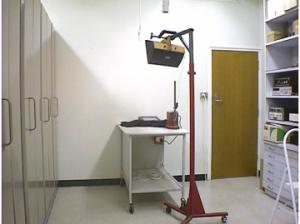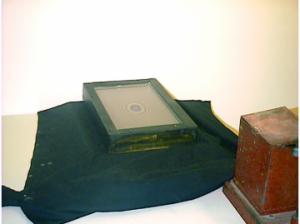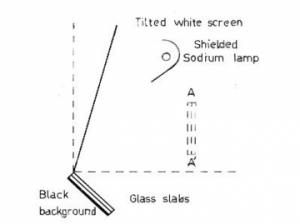Oc-2 Interference Phenomena Using Float Glass (Newton's Rings)
Aim
To demonstrate interference of light using float glass.
Apparatus
- Newton's rings apparatus
- Interference apparatus
- Sodium light source



Newtons Rings Setup and Daiagram.
Description
It has always been difficult to provide demonstration experiments for interference phenomena in optics, suitable for use in a large lecture room. While the problems involved with Young's slits and diffraction gratings have been largely overcome by the high intensities available from lasers, there is a group of interference phenomena, namely those associated with thin films, where the limitation has resulted from the lack of availablity of optical flats more than a few centimetres across.
With the advent of large scale manufacture of float glass, this limitation has now been removed. Float glass is produced by causing molten glass to spread over a bed of molten tin, in an inert atmosphere. While the glass is in the molten state, both its upper and lower surfaces are therefore free liquid surfaces which are extremely flat. The stresses which arise as the glass is allowed to cool are sufficiently small that the surfaces remain quite flat enough for ready demonstration of thin film phenomena.
When float glass is cut into slabs, further stresses are set up in it which give rise to various forms of curvature, but the regularity of the original surface is not lost. Still almost flat, but slightly convex, surfaces give rise to beautiful examples of Newton's rings: other simple fringe patterns are also obtained depending on the nature of the stresses present after the cutting process.
The slabs used in the demonstration are of float glass 34 × 22 × 1.8cm illuminated by sodium light reflected from a white screen in the manner shown in the diagram. The fringe patterns are seen in the light reflected by the glass slabs. Interference in transmitted light may be equally readily observed by locating the slabs in position AA', and the complementary nature of the interference viewed in reflected and transmitted light clearly demonstrated. These fringe patterns are clearly visible from every seat in a 180 seat lecture theatre.
Safety Notes
Interference Phenomena Using Float Glass (Newton's Rings) SOP-19